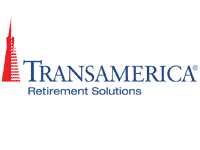Resource:
Mergers and Acquisitions: Key considerations for retirement plan conversion
This article examines the special considerations of retirement plan conversion due to M&A; activity and offers best practices for achieving a seamless transition.
Best practices for a seamless retirement plan transition
While economic recovery has been slow overall, the recent increase in merger and acquisition (“M&A”) activity stands in sharp contrast. Global M&A activity increased by 9% in 2011 over the previous year, according to Bloomberg News. Substantial cash reserves and improved financing options have given corporate buyers the confidence to forge synergies with new partners and capitalize on the competitive advantage that M&A transactions can provide.
For a merger or acquisition to be successful, a symbiotic relationship between the organizations involved must be developed. Part of the integration process—and an essential, often overlooked, aspect—involves consolidating employee retirement plans. A merger or acquisition generally involves a retirement plan conversion, an activity that can present a significant challenge unless a sound strategic approach is in place.
What is special about the M&A scenario?
While any retirement plan conversion requires attention to a number of details, additional special considerations exist in an M&A scenario. For an organization undergoing a merger or acquisition, an overarching concern should be to ensure that any action taken does not compromise the qualified status of any existing or newly created retirement plan. The ultimate goal is to achieve a happy “marriage,” with consideration given to both the objectives of the organization and the well-being of the employees involved (i.e., plan participants).
Developing an M&A strategy
Any organization that is considering, or in the process of, acquiring or merging with another institution has already identified key financial and business objectives. All too often, however, firms do not consider the implications of employee benefits until the transaction is well under way or even finalized. As a result, there may be unanticipated costs or administrative complexities that could have been avoided with a bit of careful foresight and advance planning.
Before deciding on how to address retirement plan issues, it is important to identify the primary goals, objectives, and philosophy that underlie the M&A strategy. Generally, organizations have one of two overarching concerns with respect to the retirement plan: minimize plan costs or minimize plan disruption.
Getting started
The very nature of a specific M&A situation often determines what options in implementing a retirement plan strategy are available to the plan sponsor. The issues involved with the transaction itself and the impact on retirement plans can be quite complex. Thus, it is best to enlist the help of experts. For any organization acquiring or merging with another, a good first step is to engage its legal advisors, plan advisors, and plan provider early in the process to determine how best to accomplish the overall objectives. These resources should be able to offer valuable insights, recommend alternatives, and help avoid pitfalls.
An important issue to consider is whether the current provider is up to the task. If the incumbent plan provider lacks significant experience with plan conversions, it would be worthwhile to consider other providers that do have this expertise. The plan advisor can help identify key considerations, evaluate prospective plan providers, and ensure that the chosen solution will meet all rules and regulations necessary to maintain compliance.
Take stock of the situation
Sponsors must first identify the requirements that impact their specific situations and their resulting responsibilities. When one organization acquires or merges with another, the options available may be dictated by the type of transaction. For example, a stock acquisition requires that the acquiring entity must automatically assume ownership of the acquired entity’s retirement plan. In an asset acquisition situation, however, plan acquisition is open to negotiation. Agreements reached through collective bargaining with unions may also impact decisions about plan features, benefits and employee eligibility.
Additionally, the acquired organization’s plan may include “protected benefits” that cannot be taken away from participants—such as vesting schedules, withdrawal provisions, and the definition of normal retirement age. If these protected benefits are more generous than those of the existing plan at the acquiring organization, further analysis is necessary in order to determine if it makes sense to merge the plans and create carve-outs for groups of employees. If the carve-outs are too extensive, keeping separate plans may be more judicious due to the complexities involved in the administration of a plan with multiple carve-outs. In either case, the decision can be made with analysis, since in order to either maintain separate plans or maintain separate carve-outs within a plan, the plans must pass certain nondiscrimination testing.
Therefore, before the merger or acquisition actually takes place, it is imperative to consider the retirement plans and the benefits provided by those plans, as options may be limited after the transaction is completed. A checklist of key features of the plans can be used to do side-by-side comparisons to identify areas of difference (see Exhibit 1 on pages 12 and 13), and a compliance review should be completed on both plans.
Conduct a compliance review
Qualified retirement plans cannot retain their qualified status if they are not compliant with various laws and regulations. There can also be significant financial implications for plan participants if a plan becomes non-compliant. Compliance reviews should be conducted on existing plans of both the acquirer and the acquired. The review will allow for comparison of the plan designs, provisions, objectives, investments, administration, communication, education, and contribution amounts. It will also identify potential obstacles to compliance before a course of action is decided upon.
Download the full whitepaper to learn more.

